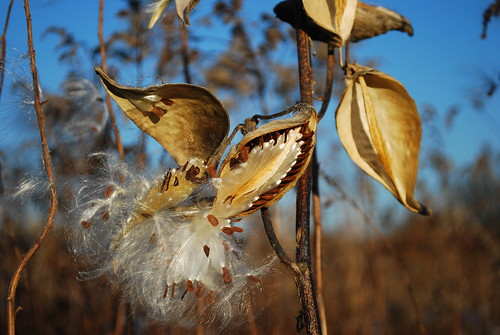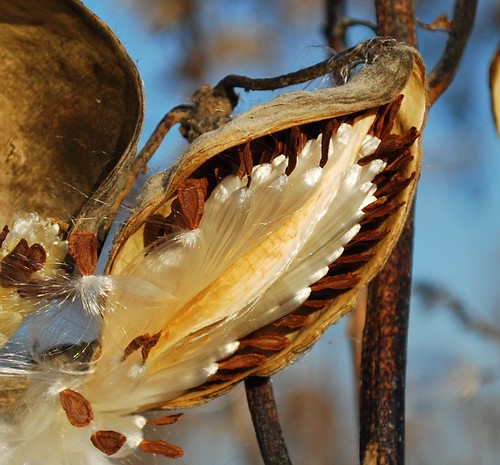Submitted for your consideration: the lowly common milkweed.

Nestled inside their pod, the invaders line up, ready to launch their assault on unsuspecting gardens and fields. . .
Common milkweed, Asclepias syriaca, commonly is thought to be a weed. Here in the Midwest it's most often found along roadsides or in those infamous "disturbed places" mentioned in wildflower guides. It's a fairly safe assumption that most people look down upon milkweed as an undesirable plant.
So I was surprised several years ago when I was giving two German horticulture students a tour of the greenhouse where I worked. The first thing the women asked about was the milkweed plants growing near the road. They told me that the plant had been featured on the front cover of a seed catalog in Germany, and that it was considered a rare and unusual garden plant there. They were surprised to see milkweed growing in undervalued places here in the U.S.
Their excitement over the plant made me look at it with a new appreciation. Have you ever really looked at a milkweed flower? They can be quite stunning! Have I thought to take a nice photo of one? Um, no. Note for 2010!
But I find myself even more fascinated by the seed pods. Inside the pods, the seeds line up with military precision. Take a closer look:

When the pod is ripe it cracks open, and one by one the seeds peel out and launch their parachutes of fluff. That's the reason why milkweed is considered to be a common pest - just the slightest breeze will carry the fluff with its attached seed into your garden, your lawn or your farm field.
Since I have the "luxury" of being surrounded by restored wetlands and recreated prairies, I'm rather free to admire the milkweeds and the geometric preciseness of their seed pods.
But yes, when the end of the line for those seeds turns out to be in my garden beds, I do yank them out.